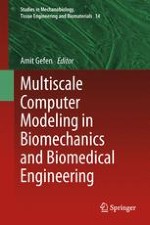2013 | OriginalPaper | Buchkapitel
Integration of Molecular Signaling into Multiscale Modeling of Cancer
verfasst von : Zhihui Wang, Vittorio Cristini
Erschienen in: Multiscale Computer Modeling in Biomechanics and Biomedical Engineering
Verlag: Springer Berlin Heidelberg
Aktivieren Sie unsere intelligente Suche, um passende Fachinhalte oder Patente zu finden.
Wählen Sie Textabschnitte aus um mit Künstlicher Intelligenz passenden Patente zu finden. powered by
Markieren Sie Textabschnitte, um KI-gestützt weitere passende Inhalte zu finden. powered by
